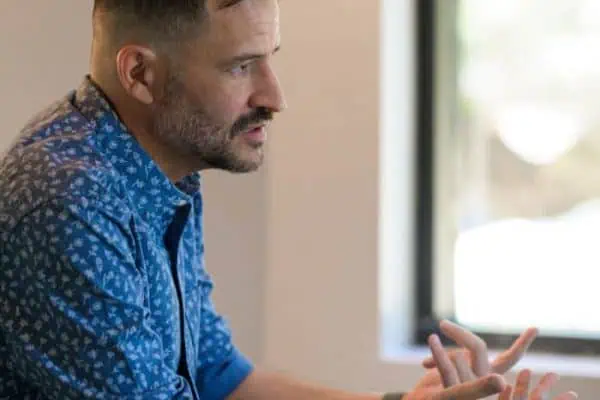Have you ever wondered the science behind paper bag breathing for anxiety? When people panic, they tend to take in too much Oxygen. When we are over oxygenated, our body changes, but part of the focus is on the PH level changes that happen which create more anxiety.
A quick story. I was presenting before a class in my business school and I thought I was prepared. Then a friend in the first row started making jokes about my presenting and saying “umm… my name is william… umm…” Well, long story short, that started to happen as I was presenting and I noticed all of the signs of having an anxiety or panic attack that you see below. Honestly, in the moment, it felt a bit out of body and the experience haunted me until I worked to overcome it with grounding tools (which we will mention below). First a little background.
What are the symptoms of an panic attack?
- Rapid Heartbeat: Many feel their heart racing, which can sometimes be mistaken for a heart attack.
- Sweating: Even if it’s cool outside, sweating is common.
- Shaking or Trembling: Some feel their hands or entire body shaking.
- Shortness of Breath: Breathing can become shallow or difficult, making people almost feel like they are suffocating.
- Chest Pain: This can feel like tightness or pressure, which may add to the fear of a heart attack.
- Dizziness or Lightheadedness: People often feel faint or unsteady.
- Nausea: Some may feel sick to their stomach or experience discomfort.
- Chills or Hot Flashes: These sudden temperature shifts are common and unsettling.
- Tingling or Numbness: Common in hands, feet, or face, sometimes due to hyperventilation.
- Feeling of Detachment: Many describe feeling disconnected from themselves or their surroundings, known as depersonalization or derealization.
- Fear of Losing Control or Dying: A strong feeling of doom, fear of “going crazy,” or fear of dying is often present.
Why does breathing into a paper bag help?
The trick is to reverse the acidity at these key junctures of the brain. Breathing into a paper bag helps to reverse this cycle as it ‘recycles’ the carbon dioxide that we have released and limits the amount of fresh oxygen that we can take in. Breathing exercises can also be practiced to produce a similar effect. In a conversation with Austin psychiatrist Dr. Scott Elkin, he discussed how it is also helpful for tension headaches and demonstrated its effectiveness with some breathing exercises to help a team member.
What to do?
Breathing into a bag can help counteract hyperventilation during a panic attack, though it’s not always recommended for everyone. Here’s a safe and effective way to do it:
- Find a Small Paper Bag: Make sure it’s a paper bag, not plastic, to ensure safe airflow.
- Cup the Bag Around Your Nose and Mouth: Hold the open end of the bag around your mouth and nose, sealing it lightly so that air flows into the bag as you exhale and back out as you inhale.
- Breathe Slowly and Steadily: Take slow, controlled breaths. Inhale and exhale gently into the bag. Aim to breathe in and out for about 5-6 seconds each.
- Focus on the Breathing Rhythm: Try to focus on the feeling of the bag inflating and deflating with each breath to calm your mind.
- Limit the Duration: Breathe into the bag for 30 seconds to a minute, then take a break and assess how you feel. Repeat if necessary, but stop if you feel lightheaded or uncomfortable.
Important Notes:
- Use Caution: Overusing this method can reduce oxygen intake, so it’s generally recommended only if hyperventilation is causing dizziness or tingling..
Grounding exercises
Deep belly breathing, grounding exercises, or meditations (this is a favorite by Dr. Sam Harris), can be equally effective and might feel more comfortable. In the story above, I mentioned how public speaking caused an episode of panic for me. Each person is going to have their own way through this but what helped for me was performance enhancement EMDR. It allowed me to process the past event and to focus on how I would like the future public speaking experiences to feel. I put this to the test at a recent ADHD training where I had to speak in front of over 100 people and I am pleased to report… it felt GREAT.
When to talk to a professional or doctor
If panic attacks are frequent, it can be helpful to discuss with a mental health professional or a doctor who can help to rule out other concerns and give targeted strategies to overcome your anxiety/panic.
For further information, read about anxiety counseling, or make a counseling appointment so we can be of help to rule out other potential causes. You can also find more information on how to deal with panic attacks here.
The Science Behind Paper Bag Breathing for Anxiety
Photo by Nine Köpfer on Unsplash
Author: William Schroeder




